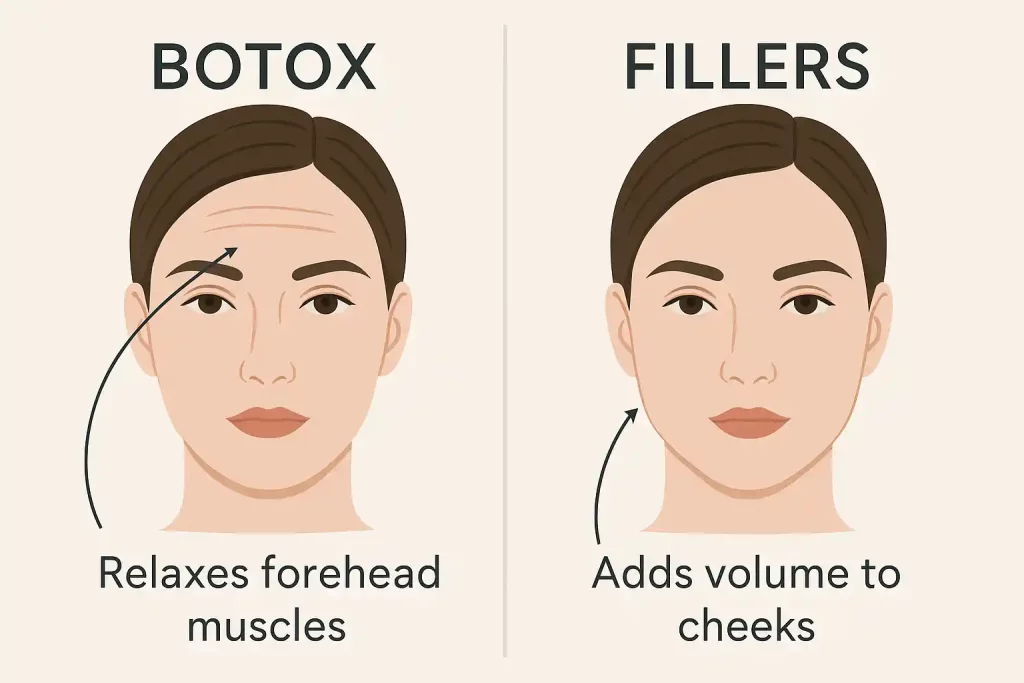Introduction
Botox is widely recognized as a premier cosmetic treatment, but with its popularity comes persistent myths and questions about its safety and scope. As more people consider aesthetic enhancements, understanding how Botox functions, its risks and benefits, and its many medical applications becomes essential. For those interested in the treatment, exploring Botox at RenewMD Sacramento offers a chance to discover professional options tailored to beauty and therapeutic results.
While Botox’s association with wrinkle reduction has made it a household name, it’s important to distinguish facts from misconceptions. Accurate information helps people make informed choices about cosmetic and wellness procedures, whether seeking subtle rejuvenation or exploring medical uses.
Understanding Botox: Mechanism and Purpose
Botox, a purified form of botulinum toxin, operates by inhibiting the nerve signals that cause muscle contractions. When injected into specific facial muscles, it results in temporary relaxation, leading to a smoother, more youthful skin appearance. Common areas for treatment include forehead lines, crow’s feet, and frown lines. The effects are not permanent; they generally last three to four months, after which movement returns gradually, allowing for flexibility and reversibility in one’s cosmetic approach.
This temporary muscle paralysis underpins Botox’s success not only in cosmetic settings but also in clinical scenarios. It enables medical providers to target overactive muscles and nerves, extending its benefits beyond aesthetic enhancement.
Concerns about safety and efficacy are natural, especially given Botox’s origins from a potent bacterial toxin. However, in controlled doses and administered by professionals, Botox’s profile for safety and predictability is well established. For a deeper dive into the science and regulatory approval process, consult resources like the FDA’s official Botox page on medical usage and approvals.
Debunking Common Myths About Botox
Myth 1: Botox Is Unsafe
The notion that Botox is inherently dangerous arises from confusion about its source. While botulinum toxin is potent, Botox treatments use minimal, purified amounts that meet strict safety standards. When performed by trained, licensed healthcare practitioners, Botox is well tolerated. Typical side effects—such as bruising, redness, or mild swelling—are transient and localized. Routine treatment protocols and ongoing FDA oversight further underscore its safety record, as detailed by clinical coverage on WebMD.
Myth 2: Botox Results in a Frozen Face
First-time patients frequently worry about a “frozen” or expressionless look. However, Botox results depend significantly on the expertise of the practitioner. A skilled injector targets only the muscles responsible for unwanted lines while preserving the patient’s natural expressions and facial dynamics. The refreshed and rested outcome is a testament to proper technique, debunking stereotypes propagated by rare cases of overtreatment.
Myth 3: Botox Is Only for Wrinkles
Botox’s versatility extends well beyond minimizing facial lines. Medical professionals regularly employ it to tackle persistent issues like chronic migraines, overactive bladder, spasms, and excessive sweating (hyperhidrosis). In each of these applications, Botox’s muscle-relaxing properties offer relief that traditional therapies sometimes cannot match, providing many patients a higher quality of life.
Modern Uses of Botox
- Preventative Treatments: Increasingly, younger adults adopt Botox to prevent the formation of deep wrinkles by addressing early signs of muscle activity before static lines develop. Dermatologists support this use as a proactive approach to preserving youthful skin structure. Learn more about preventative Botox and its benefits at Healthline.
- Medical Therapies: Botox offers proven solutions for chronic health concerns, including migraines, muscle stiffness, and excessive perspiration. Its ability to block unwanted nerve signals can be life-changing for individuals suffering from these conditions.
What to Expect During a Botox Procedure
Knowledge of the typical Botox appointment can demystify the process and alleviate pre-treatment jitters:
- Consultation: The first step is a comprehensive consultation, during which objectives, health status, and suitability for treatment are discussed in detail with a qualified provider.
- Preparation: After a plan is agreed upon, the targeted area is cleansed. Occasionally, a topical anesthetic is used to minimize discomfort.
- Injection: The provider carefully injects measured doses of Botox into the chosen muscles using a fine needle. The process is usually quick and causes minimal discomfort.
- Post-Treatment: Mild side effects—such as temporary redness, swelling, or slight bruising—may occur but typically resolve within hours. Patients can resume daily activities almost immediately, making Botox a popular “lunch break” procedure.
Choosing the Right Provider
Achieving optimal and safe cosmetic results depends greatly on choosing a qualified, experienced provider. A skilled practitioner understands not only injection techniques but also the intricacies of facial anatomy, ensuring precise placement and natural-looking outcomes. Verifying that your provider holds proper certifications, licenses, and advanced training in cosmetic injectables is essential. Years of hands-on experience often translate into refined technique, better aesthetic judgment, and a stronger ability to handle complications, should they arise. Additionally, patient reviews and referrals provide valuable insights into a provider’s professionalism, safety standards, and quality of care. Researching and consulting with the right expert thoroughly ensures a confident, personalized, and satisfying cosmetic enhancement experience.
Conclusion
Botox’s proven record of safety, precision, and versatility has earned it a trusted place in both cosmetic and medical treatments. Initially developed for therapeutic purposes, it is now widely used to reduce fine lines and wrinkles and manage conditions such as chronic migraines, muscle spasms, and excessive sweating. Its effectiveness and minimal downtime appeal to individuals seeking natural-looking results and improved comfort. However, understanding the facts—rather than common misconceptions—is essential for making informed choices. When administered by qualified professionals, Botox enhances appearance and supports overall well-being, helping patients feel more confident, refreshed, and at ease in their daily lives.








